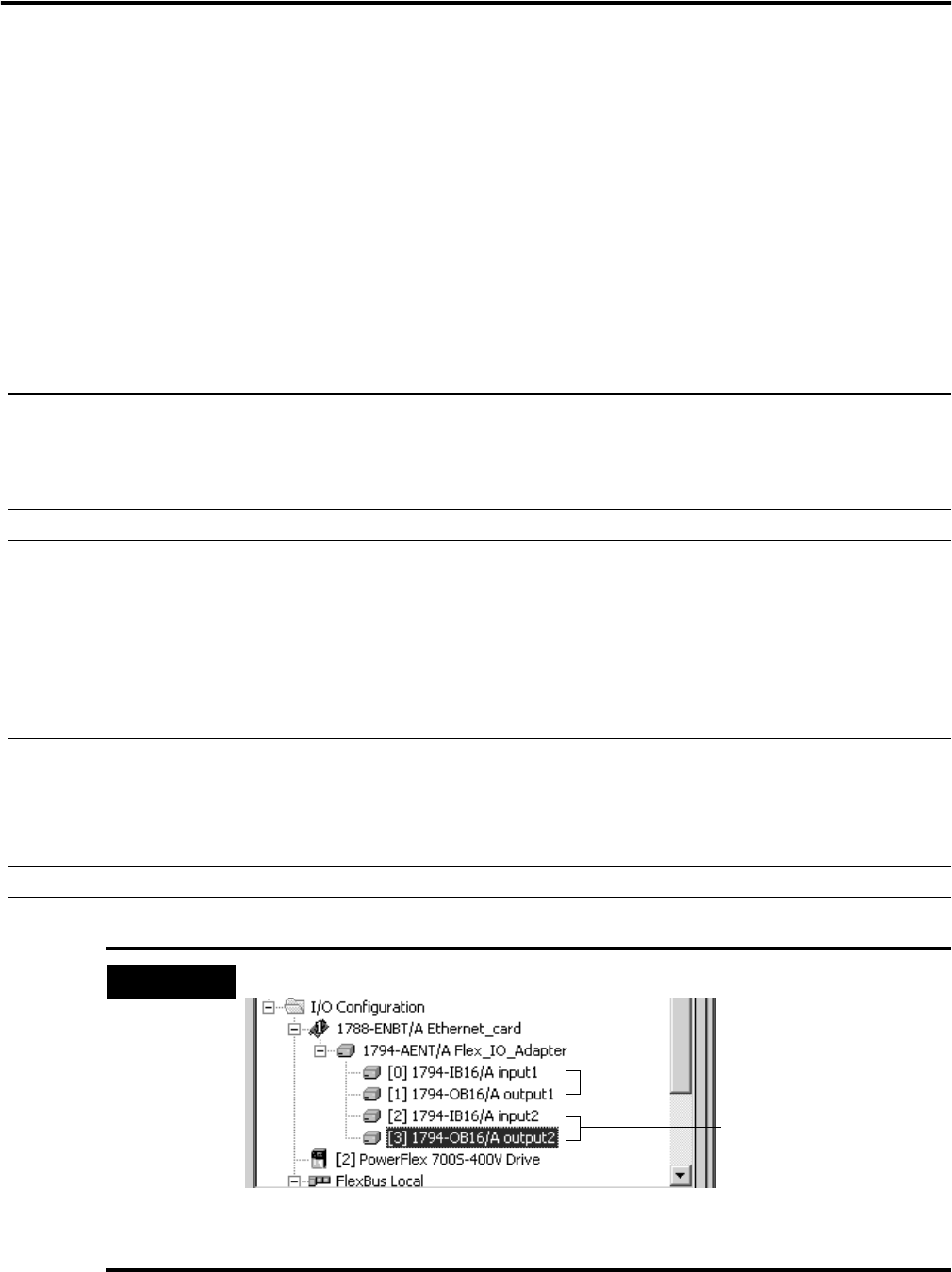
Publication 20D-UM002C-EN-P - November 2003
6-10 Communicating with Devices on an EtherNet/IP Link
Accessing remote I/O
I/O information is presented as a structure of multiple fields, which depend
on the specific features of the I/O module. The name of the structure is based
on the location of the I/O module in the system. Each I/O tag is
automatically created when you configure the I/O module through the
programming software. Each tag name follows this format:
Location:SlotNumber:Type.MemberName.SubMemberName.Bit
where:
This address variable: Is:
Location Identifies network location
LOCAL = local DIN rail or chassis
ADAPTER_NAME = identifies remote adapter or bridge
SlotNumber Slot number of I/O module in its chassis
Type Type of data
I = input
O = output
C = configuration
S = status
MemberName Specific data from the I/O module; depends on the type of data the module can store
For example, Data and Fault are possible fields of data for an I/O module. Data is the common name for
values the are sent to or received from I/O points.
SubMemberName Specific data related to a MemberName.
Bit (optional) Specific point on the I/O module; depends on the size of the I/O module (0-31 for a 32-point module)
EXAMPLE
configured for direct connections
configured for rack-optimized
connections
